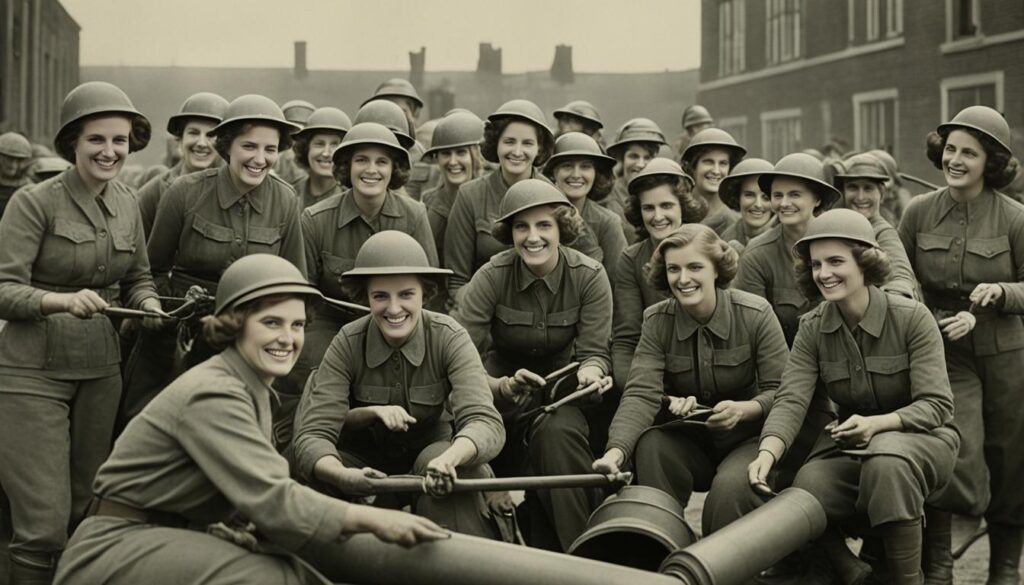World War I in 1914 changed fashion, especially women’s undergarments. Before the war, corsets were popular among middle and upper-class women. These garments created the iconic hourglass figure. The war’s demands and women’s changing roles led to a shift in bra history.
In 1917, the U.S. War Industries Board asked women to stop buying corsets. Metal was needed for military supplies. This ban freed up 28,000 pounds of steel, enough for two battleships.
The modern bra emerged during this time. It allowed women to work comfortably in demanding factory jobs. These jobs were crucial to the war effort.
Key Takeaways
- Corsets were the primary undergarment for middle and upper-class women before WWI
- The U.S. War Industries Board implemented a corset ban in 1917 due to metal shortages
- The modern bra emerged during WWI, allowing women to work more comfortably in factories
- The corset ban freed up enough steel to build two battleships
- WWI had a significant impact on women’s roles and fashion
The Corset Era: Pre-WWI Undergarment Fashion
Corsets were essential in Victorian fashion. They became mandatory for middle and upper-class women in Western society around the 16th century. The corset’s history spans several centuries, evolving to suit changing beauty ideals.
The Victorian era saw the rise of the hourglass figure. This shape featured a voluptuous bosom and tiny waist. Women achieved this look through tight lacing of corsets.
Corsets sparked controversy despite their popularity. Many doctors blamed them for various health issues. These included fainting spells, muscle atrophy, and organ damage.
The restrictive nature of corsets raised concerns. Some physicians argued that these garments harmed physical and mental well-being.
Feminist criticism of corsets grew during this time. Women’s rights advocates viewed them as physically and symbolically oppressive. They saw corsets as tools of patriarchal control, limiting women’s mobility and agency.
Corsets remained central to Victorian fashion despite concerns. The ideal silhouette demanded a cinched waist and ample bust. Women endured discomfort and health risks to meet social expectations.
As World War I approached, the corset era began to end. The war would bring major changes to women’s roles and fashion. It paved the way for more practical and comfortable undergarments.
WWI’s Impact on Women’s Roles and Fashion
World War I changed women’s roles in society and fashion. Women filled workforce gaps as men went to war. They took on jobs like factory workers, mechanics, telephone operators, and nurses.
This shift challenged beliefs about women’s abilities. It showed their value beyond the home. The war effort boosted the growing suffrage movement.

Wartime jobs affected fashion too. Corsets became impractical for factory work. More comfortable undergarments replaced them. Fashion trends moved towards a simpler, androgynous look.
Designers Coco Chanel and Paul Poiret created straight silhouettes. These new styles reflected women’s changing roles. They symbolized freedom and independence.
Women’s WWI experiences had lasting effects. Their wartime contributions and fashion changes set the stage. These shifts advanced women’s rights and changed social norms.
The Emergence of the Modern Bra
In 1914, Caresse Crosby patented the first modern bra in the United States. She created a comfy alternative using handkerchiefs and ribbon. This early design offered support and coverage while allowing more freedom of movement.
Crosby sold her bra patent to the Warner Brothers Corset Company for $1,500. Early bras were one-size-fits-all and made from stretchy material. Manufacturers soon began testing new fabrics, designs, and sizing systems.
Maidenform founders William and Ida Rosenthal introduced the A, B, C, and D cup sizing system. This new approach allowed for a more customized fit. As society evolved, the bra underwent many changes.
Today, we have diverse styles and options for bras. To learn more about the fascinating history behind America’s true Independence, visit History and Mystery.

Leave a Reply